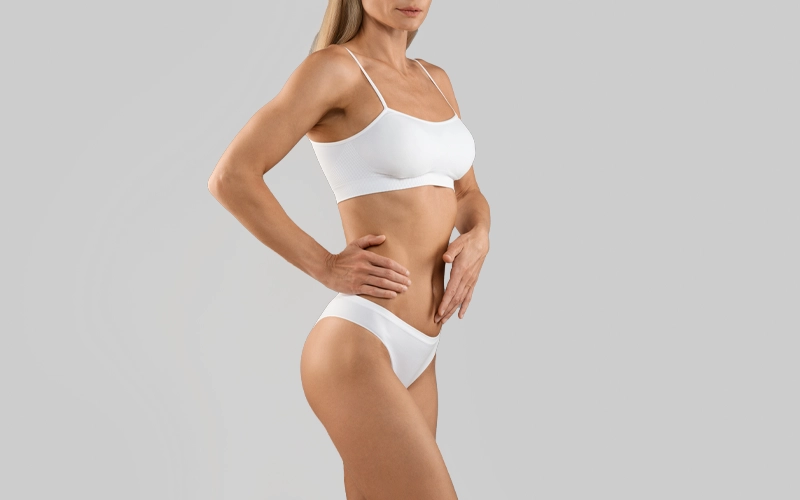

In these cases the skin that has been severely stretched is now unsupported.
Surgical body contouring following your major weight loss can improve the shape and tone of your underlying tissue that supports fat and skin. In addition excess fat and skin are removed at the same time. Body contouring results in a more normal appearance with smoother contours.
Discover the benefits of weight loss, but excess sagging skin can pose a challenge. Surgical body contouring addresses this issue, removing excess skin and fat to create a more proportionate and contoured appearance, fostering confidence in your transformation.
Explore our range of body contouring procedures designed to address specific concerns, including:
Is it right for me?
Body contouring is a highly individualized procedure, and you should do it for yourself, not to fulfill someone else’s desires or to try to fit any sort of ideal image.
Body Contouring may be a good option for:
Your consultation is your time to ask the doctor about the procedure you’re considering, how he thinks it will work for you and any concerns you may have.
Questions to Consider:
Your surgeon will:
After your consultation with the physician, you will meet with the practice manager to discuss procedure costs.
Comprehensive comprehension of every facet of your body contouring procedure is crucial. It’s normal to experience a range of emotions, from excitement about the anticipated transformation to a bit of preoperative stress. Don’t hesitate to openly discuss these feelings with your plastic surgeon.
There are several things to do prior to your procedure that will make your recovery as smooth as possible and ease your pre-procedure anxiety.
Your Pre-Op Checklist:
Day of Surgery:
Anesthesia:
Medications for comfort during arm lift surgery are administered, with options including intravenous sedation or general anesthesia, tailored to your specific needs by your doctor.
The Incision:
Body contouring procedures involve significant incisions for the removal of excess skin, with the length and pattern determined by factors such as the amount and location of the skin to be removed, personal preferences, and the surgeon’s judgment. Typically performed in stages, body contouring is tailored to your specific condition, goals, and your plastic surgeon’s expertise.
Every patient receives a personalized treatment plan, and your doctor will discuss with you about the specific incisions designed to suit your individual needs.
Closing Incisions:
Incisions are closed with either absorbable sutures or stitches, with removal scheduled within one to two weeks post-surgery.
Recovery durations after Body Contouring vary for each patient (days to months).
Following your body contouring procedure, dressings or bandages will be applied to the incisions. To minimize swelling during the healing process, an elastic bandage or compression garment may be wrapped around your body.
In some cases a temporary, thin tube may be placed to drain excess blood or fluid.
You will receive detailed instructions covering:
Ensure you address specific queries about your individual recovery:
Your plastic surgeon and/or their team will provide detailed explanations of surgery-associated risks. Consent forms will be signed to ensure your full comprehension of the procedure and potential complications.
Some Risks Involved:

© 2024. ReGenesis Plastic Surgery and Dermatology. All rights reserved